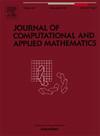COVID-19影响下全球指数动态波动关系研究:来自ttv - var方法的证据
IF 2.6
2区 数学
Q1 MATHEMATICS, APPLIED
Journal of Computational and Applied Mathematics
Pub Date : 2025-07-04
DOI:10.1016/j.cam.2025.116909
引用次数: 0
摘要
本研究旨在探讨全球经济与金融指标之间的动态连通性关系。在此背景下,研究了2015年4月24日至2024年3月19日期间比特币、石油、黄金、标准普尔500指数、美国10年期债券利率和美元指数之间的波动关系。使用如此不同类型和数量的变量的研究在文献中相当有限。本研究采用Antonakakis和Gabauer[1]提出的具有时变协方差结构的TVP-VAR方法作为分析方法。研究结果表明,相关变量美国10年期国债利率和标普500指数变量对其他变量产生净波动;石油、黄金、美元指数和比特币变量也被发现是净波动接受者。另一方面,比特币与其他变量的波动关系较小,这表明比特币可以在相关变量的投资组合多样化方面提供潜在的好处。此外,由于变量之间的总波动值较低,因此可以将相关变量组合在一起进行国际投资组合多元化。这种情况对于诸如资产定价、投资组合管理和风险管理等问题的决策者非常重要。本文章由计算机程序翻译,如有差异,请以英文原文为准。
Investigation of dynamic volatility relationships among global indices in the presence of COVID-19 impact: Evidence from TVP-VAR approach
This study aims to examine the dynamic connectedness relationship between global economic and financial indices. In this context, the volatility relationships among Bitcoin, oil, gold, S&P 500 index, US 10-year bond interest, and the US dollar index are examined over the period from April 24, 2015, to March 19, 2024. Studies using such different types and numbers of variables are quite limited in the literature. The TVP-VAR approach with a time-varying covariance structure developed by Antonakakis and Gabauer [1] is used as the analysis method in the study. As a result of the study, it was determined that the relevant variables, the US 10-year bond rate and S&P500 variables, emit net volatility to other variables; oil, gold, US dollar index and Bitcoin variables have also been found to be net volatility receivers. On the other hand, the fact that Bitcoin has less volatility relationship with other variables shows that Bitcoin can provide potential benefits in terms of portfolio diversification with relevant variables. In addition, since the total volatility value among the variables is low, the relevant variables can be used together in international portfolio diversification. This situation is important for decision-makers on issues such as asset pricing, portfolio management, and risk management.
求助全文
通过发布文献求助,成功后即可免费获取论文全文。
去求助
来源期刊
CiteScore
5.40
自引率
4.20%
发文量
437
审稿时长
3.0 months
期刊介绍:
The Journal of Computational and Applied Mathematics publishes original papers of high scientific value in all areas of computational and applied mathematics. The main interest of the Journal is in papers that describe and analyze new computational techniques for solving scientific or engineering problems. Also the improved analysis, including the effectiveness and applicability, of existing methods and algorithms is of importance. The computational efficiency (e.g. the convergence, stability, accuracy, ...) should be proved and illustrated by nontrivial numerical examples. Papers describing only variants of existing methods, without adding significant new computational properties are not of interest.
The audience consists of: applied mathematicians, numerical analysts, computational scientists and engineers.

 求助内容:
求助内容: 应助结果提醒方式:
应助结果提醒方式:


